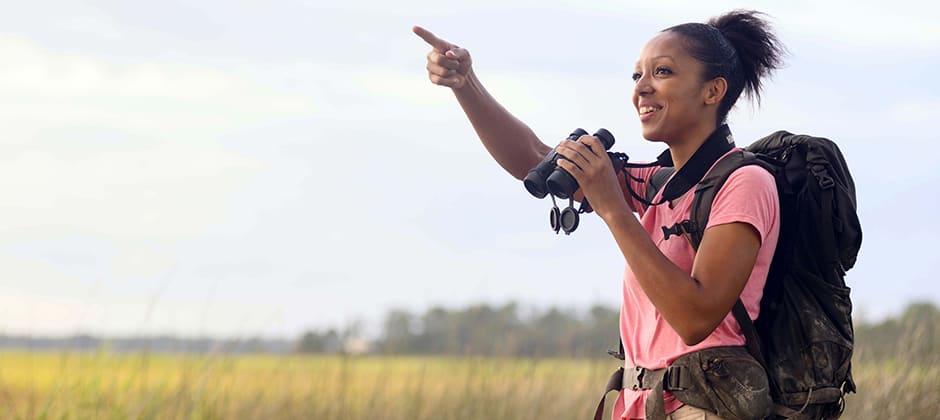Share this article
Year in Review: Expanding diversity in the profession
When a birding excursion in Central Park by Black birder Christian Cooper ended in a racist confrontation, it prompted a national discussion about diversity issues in even the natural corners of the United States, and among scientists, it inspired an examination of the lack of diversity in STEM fields, particularly wildlife science and management.
Just as the country came face-to-face with issues of injustice in the aftermath of the death of George Floyd in police custody, sparking protests across the United States,the wildlife profession also realized it had difficult questions of diversity and inclusion to confront.
“We want to increase the visibility of Black people in these spaces, especially to other Black people and people of color, because it can be very isolating,” said Corina Newsome, a graduate biology student at Georgia Southern University who helped organize Black Birders Week, an event that focused attention on diversity and wildlife. “Many of us have almost always been the only Black person in all of our spaces, academically or as it relates to outdoor exploration.”
This event inspired others, including Black Mammalogists Week, co-organized by TWS member Rhiannon Kirton. And it led to a closer look at diversity in STEM fields, including wildlife biology.
The Wildlife Society responded with “a promise to prioritize diversity, equity and inclusion in everything that we do.”
“TWS must change if we’re to cultivate a profession that is truly welcoming to all,” wrote Past President Gary White in a letter to members.
That was a message echoed by current President Carol Chambers, who has made diversity and inclusion priorities.
“Human diversity is as important to our profession and our mission as the science we generate,” Chambers wrote in The Wildlife Professional.
Those in the wildlife field increased their attention on the need to recognize diversity in agency stakeholders.
“As people have flocked to the outdoors in record numbers during this pandemic, this is a crucial time for state agencies to look closely at how we connect with our diverse mix of citizens, some personally experiencing the positive benefits of nature for the first time,” Sara Parker Pauley said, after becoming the first woman to serve as president of the Association of Fish and Wildlife Agencies.
The Wildlife Society is paying greater attention to diversity issues on wildlife.org, where the series Wildlife Vocalizations gives voice to underrepresented wildlifers.
“Everyone’s story is important,” said TWS member Kerry Nicholson, who helped launch the initiative with Women of Wildlife and TWS staff.
“These short, personal perspectives from people in the field of wildlife sciences have begun appearing regularly on wildlife.org and in the eWildlifer,” wrote TWS Professional Development Manager Jamila Blake in the November/December issue of The Wildlife Professional. “They recognize that we have each traveled unique paths to get to where we are today, yet there are threads that bind us together.”
Header Image: Corina Newsome brought attention to the lack of diversity in the wildlife profession with Black Birders Week. Credit: Katherine Arntzen, Georgia Southern University








